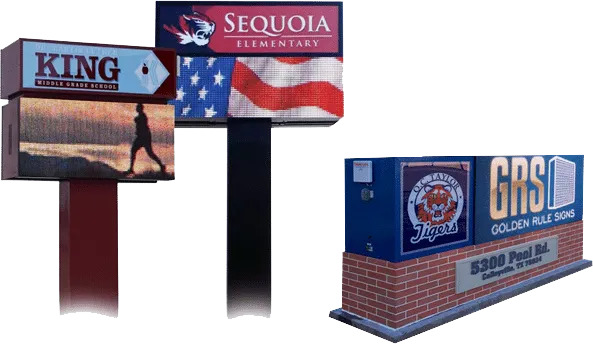In today's fast-paced digital world, indoor LED signs have emerged as a vital tool for businesses and organizations seeking to communicate effectively with their audiences. These versatile displays not only grab attention but also convey important information in an engaging way. Understanding the technology behind indoor LED signs can help you appreciate their value and perhaps even guide your purchasing decisions if you're looking for the best indoor LED signs for your needs.
What are Indoor LED Signs?
Indoor LED signs are digital displays that use Light Emitting Diodes (LEDs) to present information, advertisements, or artistic visuals. Unlike traditional signage, these displays can change content in real time, allowing for dynamic messaging that can be updated based on time of day, audience, or specific events. This adaptability makes them ideal for various settings, from retail stores to corporate offices.
How Do Indoor LED Signs Work?
The functioning of indoor LED signs revolves around several key components. At their core, these displays utilize an array of LEDs that illuminate when an electric current passes through them. Each LED is a tiny semiconductor device that emits light when energized.
Pixel Configuration
Indoor LED signs are composed of many pixels, each made up of multiple colored LEDs (typically red, green, and blue). The arrangement of these pixels determines the resolution of the display. Higher pixel density results in sharper images and text, making it crucial for applications where fine detail is essential, such as in advertising or informational displays.
Control Systems
The technology behind indoor LED signs includes sophisticated control systems that allow users to manage content remotely. These systems can integrate with computers or mobile devices, enabling users to upload new graphics, animations, or messages effortlessly. Many advanced indoor LED signs even support scheduling features, allowing businesses to tailor their messages based on specific times or events.
Advantages of Indoor LED Signs
Choosing the best indoor LED signs involves understanding their numerous advantages over traditional signage. Here are some key benefits:
High Visibility
Indoor LED signs are designed to be bright and vibrant, ensuring visibility even in well-lit environments. This feature makes them ideal for attracting customers’ attention in busy retail spaces or crowded venues.
Energy Efficiency
Despite their brightness, indoor LED signs are energy-efficient compared to older display technologies like neon or incandescent lights. This efficiency translates to lower electricity bills, making them a cost-effective long-term investment.
Versatility
One of the standout features of indoor LED signs is their versatility. They can be used in various contexts, including:
- Retail promotions
- Wayfinding in corporate offices
- Event notifications
- Entertainment venues
Choosing the Best Indoor LED Signs
When looking for the best indoor LED signs, consider factors such as size, resolution, and control options. Here are some tips to guide your selection:
Size and Resolution
Select a size that fits your space while ensuring the resolution meets your visibility needs. Larger signs with higher pixel density are ideal for areas with more foot traffic.
Control Features
Look for signs with intuitive control systems that allow for easy content updates and scheduling. Some models even offer cloud-based management for seamless remote operation.
Durability
Indoor LED signs should be built to last. Check for warranties and reviews to ensure you're investing in a reliable product.
Conclusion
Indoor LED signs represent a powerful and dynamic way to communicate with audiences. By leveraging advanced technology, these displays offer versatility, energy efficiency, and high visibility, making them a preferred choice for many businesses. When searching for the best indoor LED signs, consider their features, size, and resolution to make an informed decision that meets your needs. With the right indoor LED sign, you can effectively enhance your messaging and engage your audience like never before.





Comments